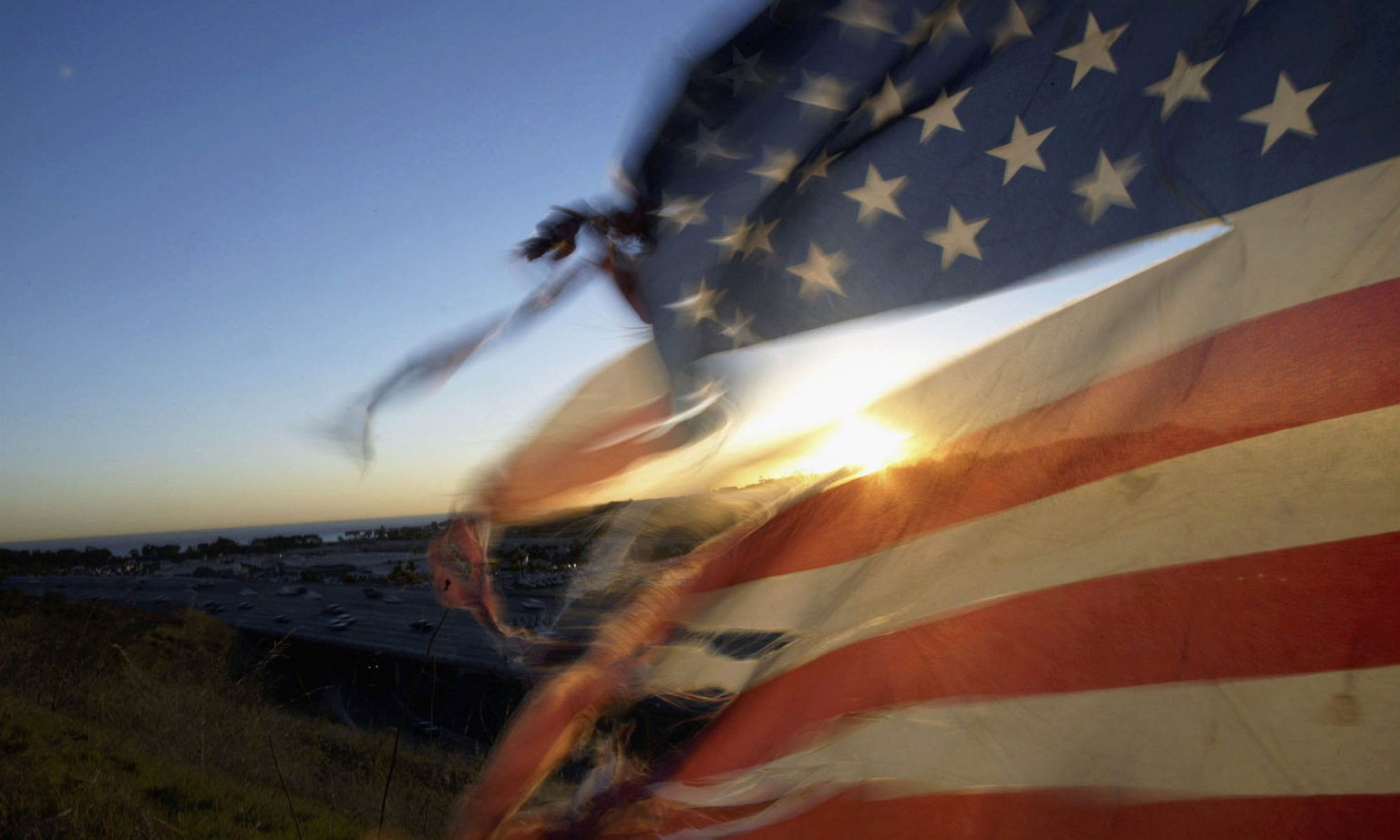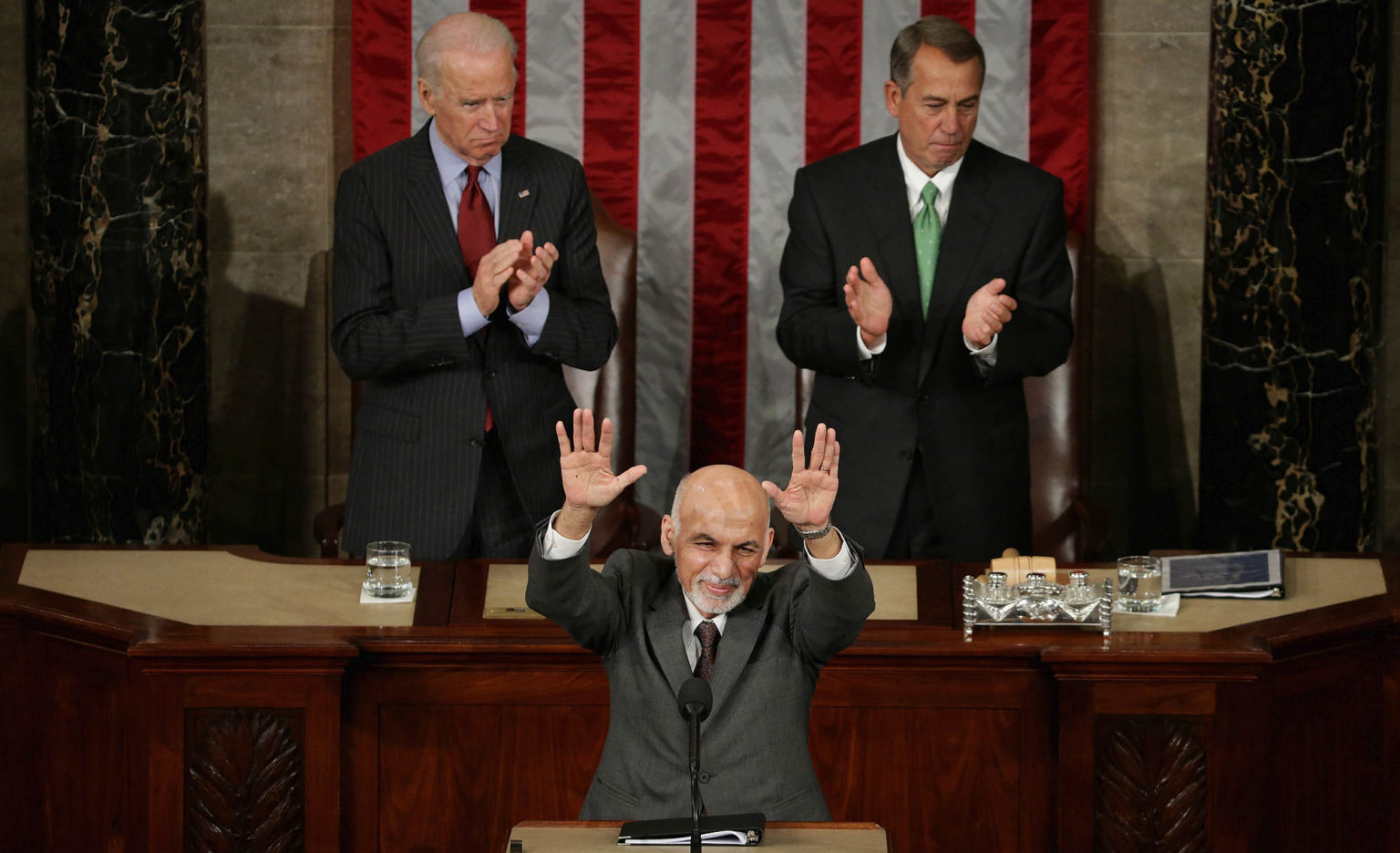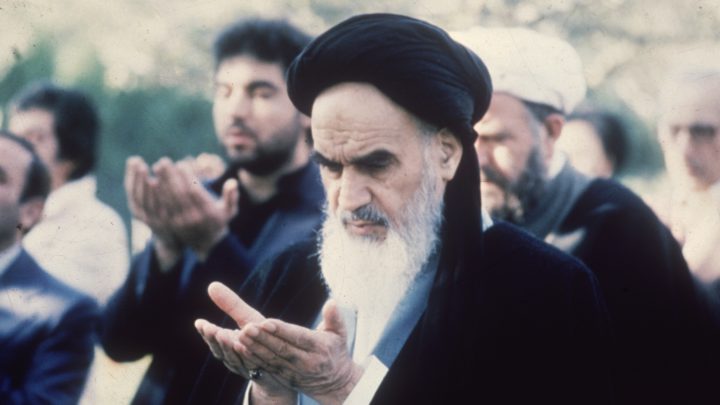
Long-read
The fall of an American empire
Afghanistan's collapse exposes the political decay in the heart of the West.
Want to read spiked ad-free? Become a spiked supporter.
The fall of Kabul to Taliban forces on 15 August marks the end of a long cycle of international politics.
The original justification for the Western military intervention in Afghanistan back in 2001 was state failure. It was said that the absence of centralised public authority and power in the mountains and deserts of Afghanistan provided shelter for the al-Qaeda terror network, allowing it to take root and launch terrorist attacks against the US.
According to the US national security adviser of the time, Condoleeza Rice, the security problem of the 21st century was not strong, expansionist states aggressing against their neighbours. Rather, it was weak, failing ones, whose disorder and disarray spread across borders, and through regions. These failing states therefore necessitated external intervention.
The disintegration of the Afghan government and army over the past few weeks exposes the folly of such an approach. After two decades of a nation-building effort that has cost many thousands of lives, and trillions of dollars, the US has succeeded only in substituting one failed state for another. And so it is now the Taliban that very clearly commands more authority around Afghanistan rather than the Kabul government. The US wasn’t building an Afghan nation state – it was building a failed state.
It is too easy to blame the Afghans themselves for the Taliban’s victory, as President Biden sought to do in his address to the nation. Doubtless the corruption of the new Afghan elite played a significant part in weakening the institutions of the US-backed Kabul regime. But given it was the US that was driving this state-building project with so much treasure and blood, an explanation of the Afghan state’s collapse cannot stop at the borders of Afghanistan. If Afghanistan was indeed a de facto province of an American empire, then the explanation for the fall of that province must be rooted in the core of the empire, not in its periphery. As Condoleeza Rice herself suggested throughout the early 2000s, the political project of state-building was always larger than Afghanistan itself – and, in truth, it always coincided with a staggered cycle of imperial decline.
The origin of state-building
The state-building policies and structures that emerged at the end of the 1990s were prompted less by the emergence of al-Qaeda-style terrorism than a much earlier political failure.
This failure centred on Western powers’ use of economic ‘shock therapy’, sanctions regimes and cruise-missile diplomacy to flatten the political and social order of the old Eastern bloc and Third World during the 1980s and especially the early 1990s. As these already battered states and societies, from the former Yugoslavia to vast swathes of Africa, were shredded by the rapid introduction of market economies, or pulverised by UN coalitions and humanitarian interventions, it became clear that Western powers had destroyed one order, but had failed to replace it. They realised that new institutions of centralised control had to be re-established to replace the old political order. They realised that, to function effectively, the operation of the market and globalised capitalism required a whole infrastructure of civil society, public institutions, regulatory agencies, laws and security apparatuses. State-building thus emerged as a corrective to the destructive excesses of the 1980s and early 1990s.
However, destroying old orders proved easier than building new ones – as Afghanistan has shown.
Although the al-Qaeda terror network had its base in Afghanistan between 1996 and 2001, its alliance with the Taliban was not a natural one. The Taliban of the 1990s might have been as doctrinaire as al-Qaeda, but it was comprised of poor and rural Afghans, who were largely ignorant of the outside world – theirs was a revolt of the village against urban modernity and technology as much as anything else. Hence the Taliban banned mobile phones, cameras and televisions when it swept into Kabul in 1996. Contrast that with the leader of the al-Qaeda network, Osama bin Laden. He was very much a modern Islamist in that he saw Islam as a source of ideological renewal for a godless modern world. He courted journalistic interviews and fired off his videotaped pronouncements and recordings to Al Jazeera.
Once the US decided, in 2001, that conquest rather than police and intelligence operations was to be its chosen modus operandi against terrorist cells like those of al-Qaeda, state-building was inevitable. The US invasion swiftly overthrew the ragtag militias of the Taliban, necessitating the creation of a substitute political order to replace the tribal coalition and rural theocracy that underpinned Taliban rule. This inaugurated the process of state-building in Afghanistan, built up in cooperation with the UN and an occupying NATO force.
State-building was not restricted to Afghanistan, however. It became a new imperial project to help cohere the West’s Cold War victory after the failures of the 1990s. State-building spawned a whole cadre of globalised technocrats, governance experts, aid workers, constitutional experts, peacekeepers, administrators, counter-insurgency theorists, spooks and lawyers. In some cases, it even produced outright viceroys, with protectorates imposed on places such as Kosovo and East Timor.
Ashraf Ghani, the Afghan president who has fled Kabul for the United Arab Emirates, is a case in point. He himself was a technocrat, whose academic training was in the anthropology of early modernisation. Indeed, the US military even drew anthropologists into its war effort in Afghanistan under the ‘Human Terrain’ programme.

State-building was nothing if not frenzied. Court houses were built, women’s NGOs funded, parliamentary buildings thrown up, and new police forces and armies assembled, sometimes from the militias of former warlords. War-torn capital cities throughout the Balkans and Africa became overnight boom towns with vast infusions of aid, while the rural hinterlands remained largely untouched, and often wracked by permanent insurgency and constantly collapsing ceasefires, as in the Democratic Republic of Congo.
But, like the shock therapy of the 1990s, state-building quickly ran up against its own limits. While it was easy to throw up new buildings, and subsidise local elites and middle classes with NGO funds, it was harder to legitimise this new order. After all, these fragile new institutions were dependent on foreign armies, whether NATO forces or United Nations peacekeepers, to keep warlords and insurgents at bay. The state-builders were caught up in numerous binds: they wished to create long-lasting institutions of independent statehood, yet at the same time they expected these new institutions to enact Western rather than indigenous policymaking. Rather than representing their own citizens, these jerry-rigged new states were intended to act as transmission belts for policies concocted by Western policymakers and international agencies.
Humanitarian compassion and altruism were sufficient to justify state-building from the outside as a new civilising mission. Yet at the same time, devolving political responsibility to local institutions proved impossible. After all, painting a country’s inhabitants as victims of human-rights abuses may justify the external interventions in the first place. But victimhood, by its very definition, is no basis on which to build independent, politically self-sufficient nations.
The state-builders had long been aware of the problem of the lack of legitimacy of these new states. This generated a list of technocratic euphemisms such as ‘capacity-building’, ‘local ownership’, ‘partnership’, ‘bottom-up’ and ‘grassroots’. These tried to fill in for the very thing these states really lacked – namely, political legitimacy. Moreover, there was nothing behind these terms, not least because the problem ran deeper than how to make local populations connect to Western-led institutions.
Many analysts and eventually historians will pore over the fall of Kabul and the many contributing factors that led to the implosion of the US’s client state. Some will look to parse the inter-ethnic relations among Tajiks, Uzbeks and Pashtun Afghans. And others will try to trace the bank accounts through which the cronies of ex-president Ashraf Ghani siphoned off billions. But there is no avoiding the ultimate issue – the lack of political legitimacy that led to the collapse of the Afghan state has to be rooted at the core of the global political system, and not in a remote imperial outpost.
For all the death and hardship visited upon Afghanistan during this 20-year-long occupation, as long as state-building could be justified in humanitarian terms – defending the rights of Afghan women and children against rapacious fundamentalists, for instance – it could continue interminably. The war in Afghanistan has already lasted two decades, ran the thinking, so what’s a few more?
What ultimately undercut the war effort was not any battlefield loss to the Taliban, but Donald Trump. In his sloganeering for an ‘America First’ foreign policy, and in his efforts to delegitimise state security agencies and bureaucracies, he kept raising a single question to which no one had an answer – what was the US self-interest in these never-ending and supposedly altruistic interventions? Given the grandiloquent proportions to which US foreign-policy ambition had swollen, it was easily punctured by this simple but sharp question. Twenty years after the original invasion of Afghanistan, and nearly a decade after the assassination of Osama bin Laden, no one had any meaningful answer to Trump’s question.
The very election of Trump himself and the turbulence that shadowed his administration indicated a deeper problem for US foreign policy – the collapse of political legitimacy at the core of this new empire. How could the US expect to build legitimate states in the periphery of the international system, when its own domestic legitimacy was evaporating?
The decay of the political order
This problem was illustrated last summer, when the US government sent in Humvees – still painted in desert tan from decades of Forever Wars in the Middle East – to repress the looting and rioting that had broken out in the wake of Black Lives Matter protests and lockdowns. This display of militarised policing in the midst of a pandemic that threatened to overwhelm ramshackle public-health systems revealed the source of the problem: the US itself is becoming a failing state. After all, it was now deploying its military force against its own citizens, an exercise of power without right. This hints at a domestic political order that is so hollowed out that only its instruments of global empire remain standing – an outsized central bank and an outsized war machine seeking to prop up the global order.
Indeed, successive US governments have spent a total of $2 trillion on the war effort in Afghanistan. And they have done so while infrastructure has crumbled and de-industrialisation accelerated at home. This demonstrates that, prior to Covid at least, war has become the only legitimate reason for large-scale public spending. Needless to say, much of this spending was recycled to private contractors and arms manufacturers as a de facto public subsidy for US capitalists.
The fact that the US state was unable to justify public spending, except in terms of maintaining global order through force, in turn exposed something else – the emptiness at the core of the global market system that had emerged after the Cold War.
As stated above, state-building was developed as a counterpart to the neoliberalism of the 1990s. It was intended to undergird the extension of the market into the developing world. Neoliberalism was expressly counterposed to the state and intended to curb, delegitimise and repress public power over the market. But, at the same time, neoliberalism was always dependent on state power to achieve these aims. As a result, neoliberalism succeeded in delegitimising public power and authority, while also relying on the state to expand the rule of the market. The justification for the exercise of state power and public authority shrivelled away, as the market itself could not generate its own legitimacy or justification in the face of stagnant wages, growing inequality and recurrent financial bubbles. Without an effective justification for the exercise of public power, political order itself inevitably decays: thus state failure is built into the logic of neoliberalism.
We can see the results today at the core of the global order in the US. There, political life is decaying into oligarchic rule from above and fragmented identity politics from below. And we can see it on the periphery, in places like Afghanistan, where this decay has resulted in warlordism and ethnic strife. This is the globalisation of what the critical theorist Max Horkheimer termed ‘racket society’, in which a social order, underpinned by law and universal principles, disintegrates into various large hierarchies offering protection in return for domination, and devoid of any sense of common interest or general will. In the US this is apparent in an emerging oligarchic state and the various identity groups it sponsors; in the periphery, it is apparent in the predominance of warlords, drug dealers, NGOs, kleptocrats, smugglers, terror networks, UN agencies, peacekeepers and occupying armies. State failure is the result of globalised neoliberalism.
Perhaps religious fervour and Islamic ideology will be sufficient to enable the new Taliban to offer an alternative to the warlordism and graft of the US-sponsored Ghani regime. Perhaps the Taliban racket will win out over the warlord-NGO-NATO racket, and a new proto-nation might even emerge.
In the US itself, however, there is no clear answer to the problem of the failing state. For example, the BLM movement not only exposed the declining legitimacy of the US state. It also amplified it in its call to ‘defund the police’ and abolish the forces of public order. BLM, for example, merely wants to turn over burned-down and increasingly violent inner cities to state-funded NGOs and social workers, which constitute the social base of the BLM movement. And so one racket substitutes for another.
Until we establish a cohesive political vision based on universal principles and a concept of general will that rises above the parochialism of identity groups and their associated rackets, little will change – our states will continue to fail.
Philip Cunliffe is senior lecturer in Politics and International Relations at the University of Kent. His most recent books include Cosmopolitan Dystopia: International Intervention and the Failure of the West.
Pictures by: Getty Images
Who funds spiked? You do
We are funded by you. And in this era of cancel culture and advertiser boycotts, we rely on your donations more than ever. Seventy per cent of our revenue comes from our readers’ donations – the vast majority giving just £5 per month. If you make a regular donation – of £5 a month or £50 a year – you can become a and enjoy:
–Ad-free reading
–Exclusive events
–Access to our comments section
It’s the best way to keep spiked going – and growing. Thank you!






Comments
Want to join the conversation?
Only spiked supporters and patrons, who donate regularly to us, can comment on our articles.